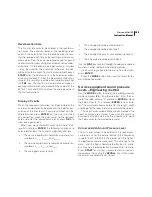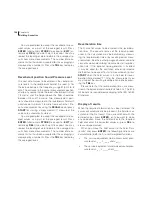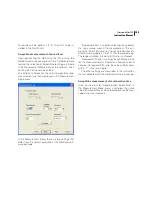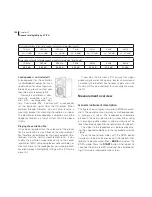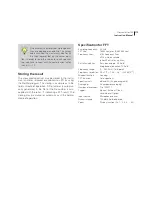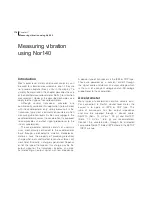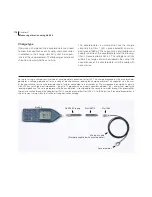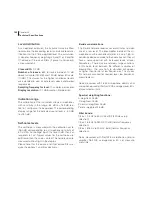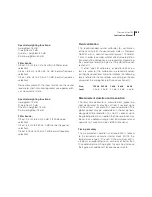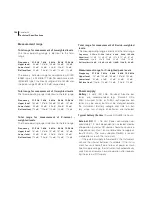
169
Norsonic Nor140
Instruction Manual
Real background noise
If a real background noise is present during the meas-
urement, the effect of the noise will in most cases be
treated as noise according to the STIPA-method and
lower the STI-value. However, some noise signals
may be interpreted as a STIPA excitation signal giv-
ing wrongly a modest STI value. The instrument is
programmed to detect such situations and place a
question mark adjacent to the indicated value. How-
ever, not all cases can be detected properly. To inves-
tigate such potential problems, we recommend mak-
ing a measurement without an excitation signal. If this
STI-value is low or considerably lower than the value
measured with the excitation signal (preferably STI
≤
0,2), the reading will have a high degree of reliability.
If the background noise can be switched off, it is
possible to measure the response to the STIPA-exci-
tation and noise level separately. The STI-value may
be corrected for the background noise later – in the in-
strument or by applying the Excel-sheet “STIPA-calc”
delivered with the instrument option. This will eliminate
the interference between a spiky-noise signal and the
STIPA-method.
Precision of the STIPA method
Because the test signal is band-limited random or
pseudo-random noise, repetition of measurement
does not normally produce identical results, even
under conditions of steady interference. The results
centre on a mean with a certain standard deviation.
Typically, the value of the standard deviation is about
0,03 with stationary noise interference. With fluctuating
noise (for example, a babble of voices), higher stand-
ard deviations may be found, possibly with a systemat-
ic error. This can be checked by carrying out a meas-
urement in the absence of the excitation signal. This
should result in a residual STI value less than 0,20. An
estimate of the standard deviation should be made by
repeating measurements for at least a restricted set of
conditions/positions.
Analysis and interpretation
of the results
It is important to examine the modulation matrix to de-
termine the reliability of the results.
As a rule, the modulation index in each octave-band
should decrease with increasing modulation frequen-
cy. Constant or slightly reducing values in a column
indicate the presence of noise. Large reductions indi-
cate that reverberation is the main effect. Values that
first reduce and then increase with increasing modu-
lation frequency indicate the presence of periodic or
strong reflections, which may produce an over-opti-
mistic conclusion. It is recommended that if this effect
is detected, it should be reported with the results and
an estimated correction applied.
Limitations of the STIPA method
The STIPA method should not be used for those public
address systems that
a)
introduce frequency shifts or frequency
multiplication;
b)
include vocoders (i.e. LPC, CELP, RELP, etc.);
c)
have a background noise that is impulsive;
d) introduce strong non-linear distortion
components.
If d) applies, or possibly applies, the full STI method
should be used instead or used to verify the results
obtained by the STIPA method.
Summary of Contents for nor140
Page 4: ......
Page 16: ......
Page 17: ...nor140 SOUND ANALYSER ...
Page 18: ......
Page 212: ...194 ...
Page 218: ......

